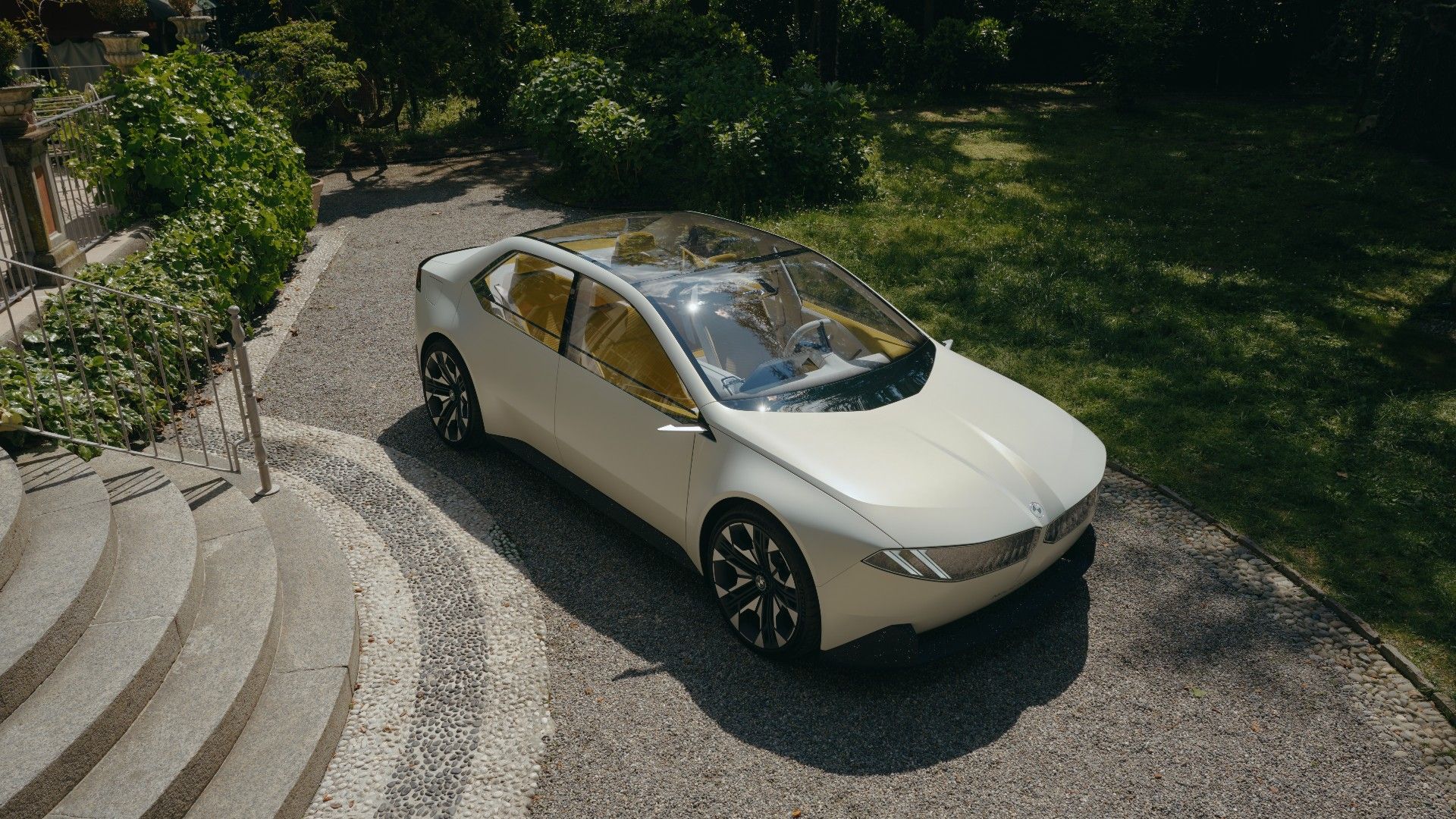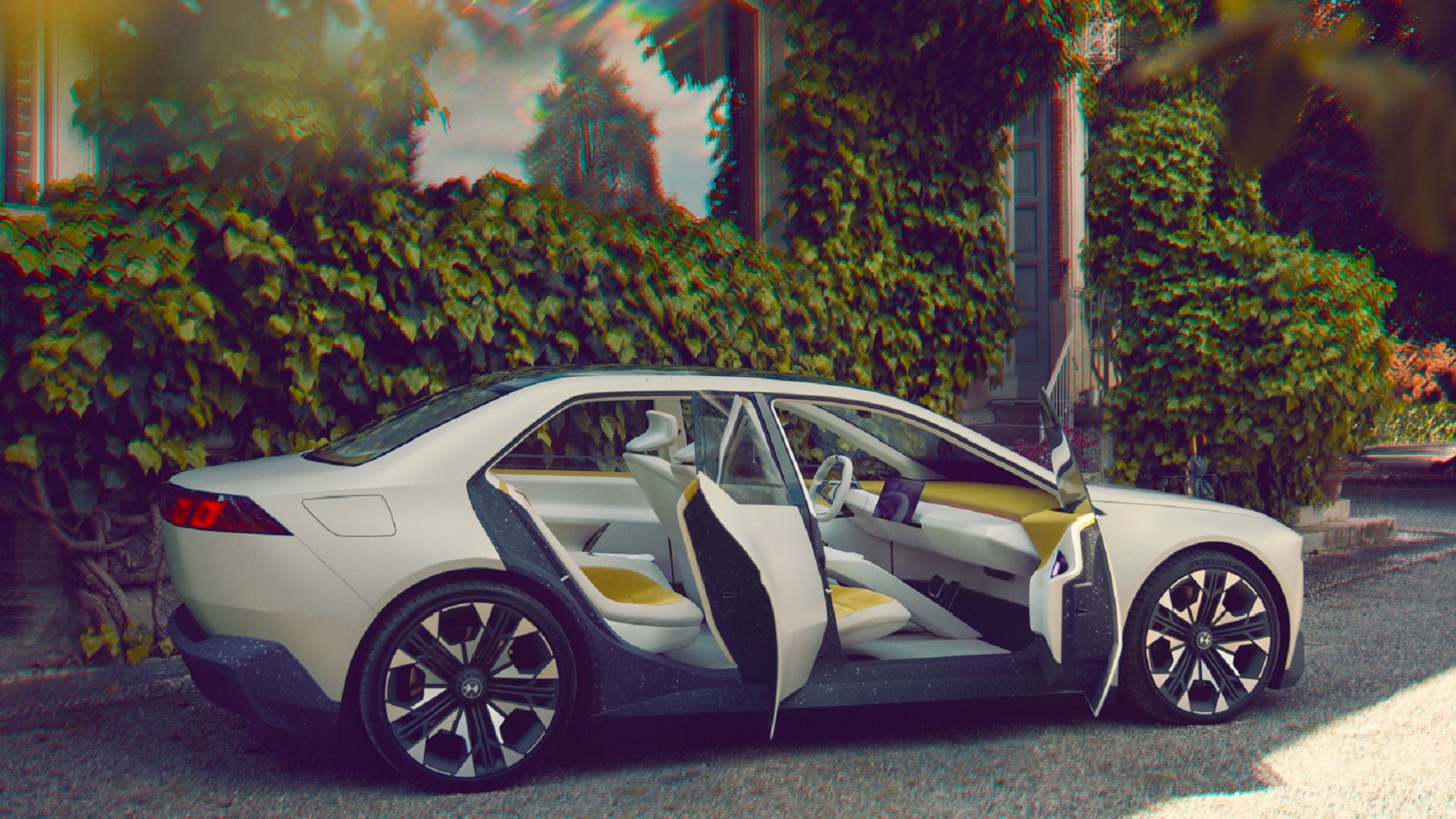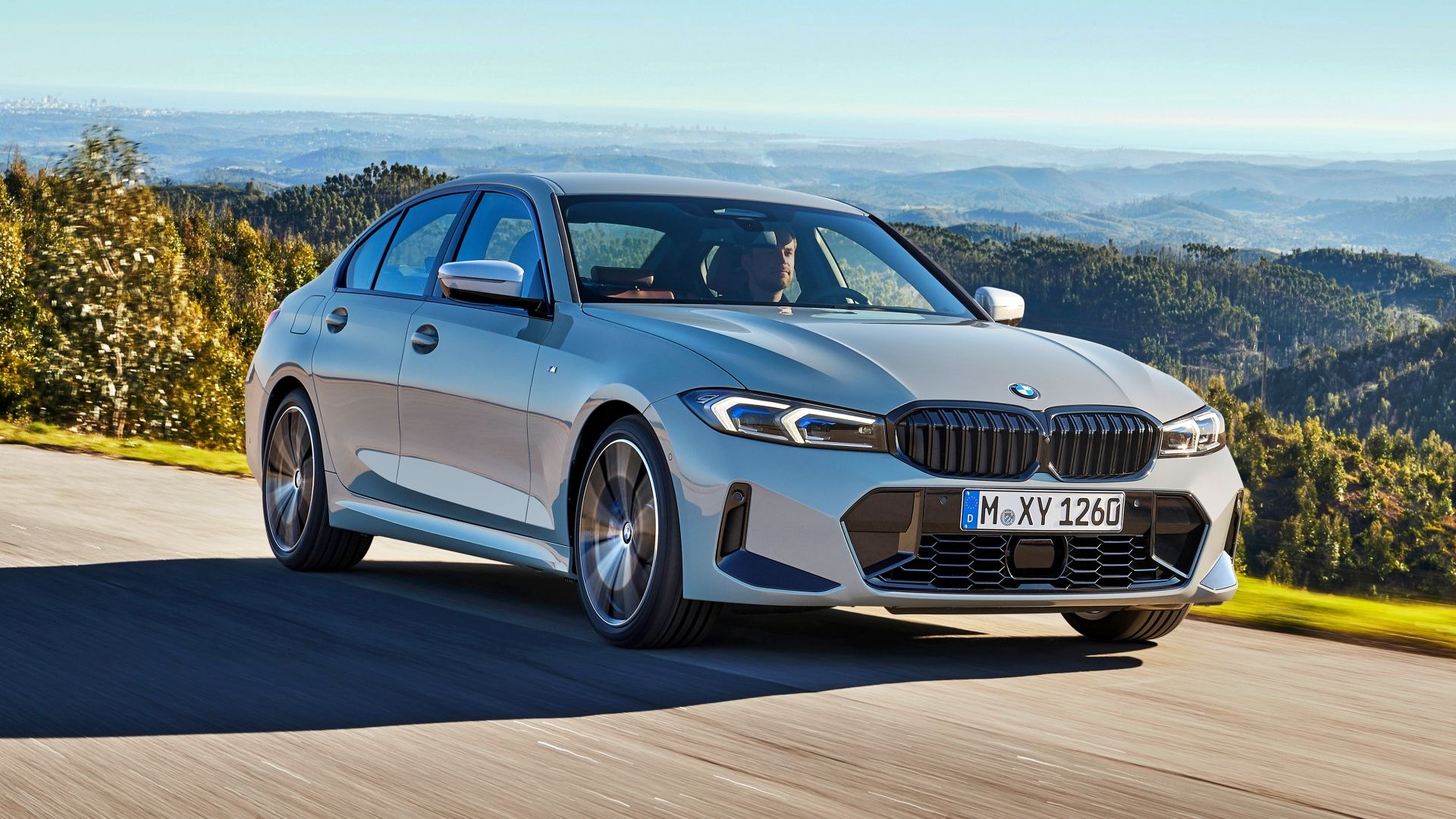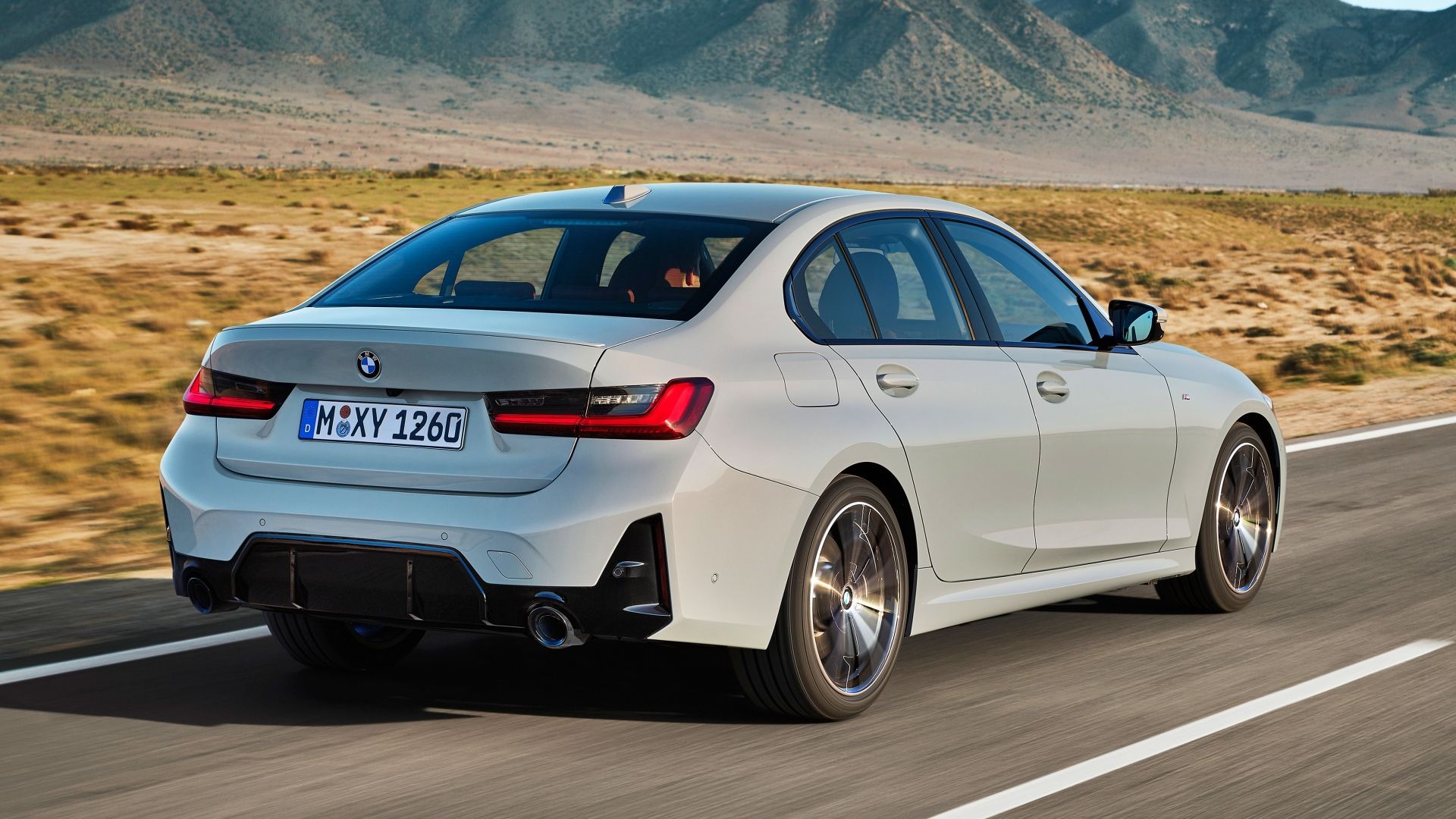Summary
- BMW's Vision Neue Klasse concept car showcases the company's future direction with its iconic, cool, and alive design traits, although opinions on its aesthetic vary.
- The concept car serves as a preview of the upcoming electric BMW 3 Series, displaying the potential of the Neue Klasse platform and its innovative features such as digitized kidney grilles and 3D printed lighting elements.
- The electric BMW 3 Series, set to debut in 2025, will feature a new powertrain and design inspired by the Neue Klasse concept, aiming to surpass its current ICE version in terms of performance and range. BMW is investing in expanding EV production and plans to release six all-electric vehicles by 2026.
BMW has recently unveiled its Vision Neue Klasse concept car at the IAA Mobility Auto Show, in Munich, Germany. The Neue Klasse, which formerly referred to a classic family of BMWs, is now the moniker of an upcoming branch of EVs with a redefined style. The company describes its vision for the future with three main traits: iconic, cool, and alive. The first one refers to the timeless geometry of the vehicles, which aim to be humbly charming instead of forcibly fashionable. Whether the Neue Klasse EV achieves just that is currently a matter of diverging opinions. While we've grown accustomed to extravagant concept cars such as the Mercedes Vision One Eleven, the Neue Klasse Concept takes a detour around that norm with a simpler look. The result, however, has generated mixed reactions online. While some fans appreciate the design of the concept as a healthy innovation, others see it as a faux pas on BMW's part.
The fact that this Concept is more than just a pompous display of creativity, but an actual indication of the company’s direction, has definitely caused some concern. The electric prototype notably serves to showcase the potential of the Neue Klasse platform and stands as an example of what the electric BMW 3 Series will look like, once it hits the roads in 2025.
For Better Or Worse, The Neue Klasse Vision Concept Is Bold In Its Design
Although the Neue Klasse Concept is meant to provide a glimpse of the future, we cannot look past its retro-ish aspect. The car appears to be an homage to the 1968 BMW 2002, with a more flamboyant styling. The painting chosen is referred to as “Joyous Bright”, and combined with a subtle yellow hue. The fascia is enhanced with a slanted shark nose, harboring two illuminated kidney grilles that extend across the front bumper. The BMW 303 was the first car to wear the kidney grilles, in 1933. Since then, the signature element has come in diverging styles and sizes. Fast-forward ninety years later, and its function is changing with the introduction of electric vehicles.
Since EVs don’t need an engine cooler, the kidney grilles on the Neue Klasse Concept are now mostly ornamental, but also serve as lighting graphics. BMW is notably exploring the idea of digitizing the kidney grilles to have them display basic instructions (such as charging percentage) in the future. The company claims to have made a number of lighting elements using 3D printing.
The rear seems to be the most controversial area, judging by the comments online. The design team took a rather adventurous tone when making the back of the Neue Klasse, with new full-width headlights that emphasize the digitalization team. Although their look might not be to everyone's taste, their shape does give them a bit of aerodynamic practicality, and helps them replace the gurney, which is also MIA. One thing we can see after lingering gaze is that there are no door handles to speak of. Instead, the driver can access the vehicle through light sensors. The absence of the BMW badging is particularly noticeable as well. The company’s insignia is seamlessly implemented onto the hood and rear-side.
The electric BMW is mounted on 21-inch wheels that honor the classic cross-spoke styling found in BMW race cars. The overall design is described as “almost monolithic”, and credited for a 30 percent increase in range. BMW also claims the Vision One is 25 percent more efficient than any other EV currently under the company’s umbrella.
The Concept Is Introducing A New Technology
Inside, the BMW Neue Klasse gives a feeling of ample space. The wide, clean cabin is pretty minimalist. The dashboard is fully draped in microfiber, and the seats are nicely garnished in corduroy material. The windshield is angled-down, and gives a sporty feeling, along with the racing-like steering wheel. Despite being a concept, the Neue Klasse offers enough legroom to be practical. The trapezoidal center display puts all the basic information within reach. And, although the absence of a gauge cluster in modern EVs might not be to everyone's taste, as is the case with the Model 3, the Neue Klasse makes up for it in its own way. The company is in fact using the concept car to introduce a new system to its customers.
The debuting technology, called “Panoramic Vision” is a new display panel that complements the head-up display. This panoramic screen basically serves to put all the necessary driving data, at your eye level while you’re holding the wheel, thus effectively helping you stay focused on the road. Although we don’t have any specific range numbers, BMW does boast a possible 621 miles on a full charge under this new platform, which could definitely be a game changer.
The car will be pinned on the company’s sixth-generation e-Drive technology, with an 800-volt capacity. This setup allows for a 20 percent increase in energy density, a 25 percent upgrade in efficiency, and a 30 percent increase in terms of charging speed. The platform is meant to be primarily made in Hungary; however, BMW is apparently to extend the production line to one of its plants in the U.S., in order to take advantage of the new EV tax incentives.
The BMW 3 Series Is Getting Electrified, And Redesigned
As previously mentioned, the Neue Klasse Vision Concept is mostly an introduction of the upcoming BMW 3 Series EV. As a matter of fact, the two are 90 percent similar. The decision to incorporate an electric powertrain into the flagship 3 Series is a historic milestone in itself, considering the famed sedan has been a key model since 1975. Now, the BMW 3 Series is set up to debut with a new powertrain, and a new design in 2025, as a 2026 model. The design will thus resemble that of the Neue Klasse, with possible hints of the BMW i Vision Dee Concept. The electric 3 series will likely include a rear-motor, rear-wheel-drive configuration.
While the company hasn't divulged the specs yet, we can reasonably expect the renovated sedan to exceed its current competitor in terms of acceleration. The 255 horsepower and 295 pound-feet of torque boasted by the current ICE should also be exceeded. In terms of pricing, the electric 330i will likely come with an MSRP of $45,000, putting it in the same bracket as the Hyundai Ioniq 6.
2023 BMW 3 Series Performance Specifications
Engine | 2.0-liter BMW TwinPower Turbo, inline-4 |
Maximum Power | 255 horsepower |
Maximum Torque | 295 pound-feet |
Acceleration (0-60mph) | 5.6 seconds |
Fuel Economy | 26 city/ 36 highway MPG |
Electric vehicles under the Neue Klasse umbrella are notably expected to become a new gold standard for electric range. If the claims are true, then the 330i should logically offer more than 300 miles on a full charge. The charging speed should also be optimized, in order to allow the electric BMW to fully benefit from the company’s Electrify America Project. The latter is a joint initiative between seven of the world’s leading automakers, aimed at providing 30,000 chargers in the U.S. and Canada, by 2030.
The switch from the ICE-version will thus be a crucial aspect of BMW’s electrification plans. The latter has recently invested 1.7 billion to expand its EV production in the U.S. and aims to release a minimum of six all-electric vehicles by 2026.




